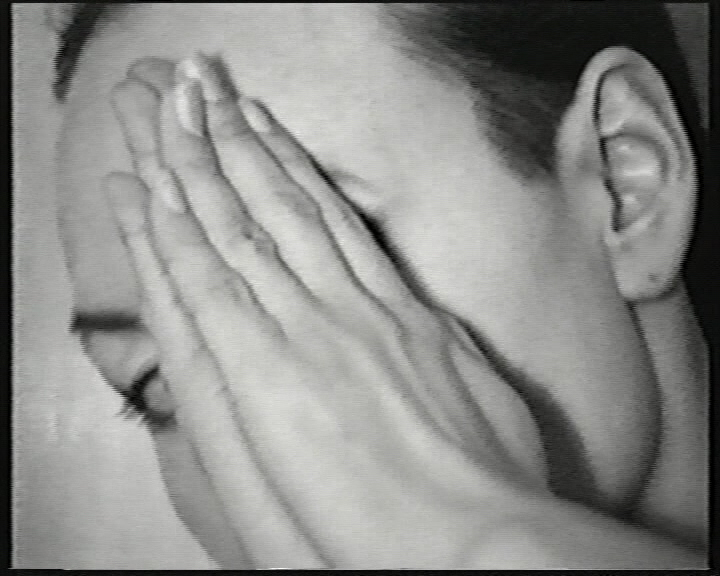Jessie Kleemann’s Art of Survival
DOI:
https://doi.org/10.7146/peri.v19i37.135189Resumé
In her work as an educator, actor, poet and visual artist, Jessie Kleemann has persistently expanded the limits of arts discourse in Kalaallit Nunaat, not least through her unique approach to body art informed by historical Kalaallit theatrical forms and antimimetic dramaturgy. Emphasizing how Kleemann’s embodied practice prompts reflection on the potential for action amid environmental collapse, this essay situates her work alongside schools of thought that have theorized the body during moments of crisis. I focus on Kleemann’s early experimentation with analog video and recent ecocritical poetry, aligning her work with traditions ranging from ancestral Inuit performance genres to post-1945 action art and contemporary practices advocating on behalf of missing and murdered Indigenous women and girls. Kleemann’s methods, refracted through these traditions, place embodied action at the center of efforts to form more ethical relations.
Referencer
hmed, Sara, 2006. Queer Phenomenology: Orientations, Objects, Others. Durham: Duke University Press.
Anthes, Bill, 2015. Edgar Heap of Birds. Durham: Duke University Press.
Augaitis, Daina and Kathleen Ritter (eds), 2008. Rebecca Belmore: Rising to the Occasion. Vancouver: Vancouver Art Gallery.
Carlson, Andrea, 2020. The Mississippi River is the Opposite of the Anthropocene. Anthropocene Curriculum (https://www.anthropocene-curriculum.org/contribution/the-mississippi-river-is-the-opposite-of-the-anthropocene). Consulted 25 August 2022.
Caruth, Cathy, 1995. Trauma: Explorations in Memory. Baltimore: Johns Hopkins University Press.
Hansen, Stine Lundberg, 2020. Jessie Kleemann: Performances med tråd og sælspæk. Kunsten.nu (https://kunsten.nu/journal/jessie-kleemann-performances-med-traad-og-saelspaek/). Consulted 25 August 2022.
Hughes, Bethany, 2020. Oka Apesvchi: Indigenous Feminism, Performance, and Protest. Theatre Journal vol. 72, no. 2, pp. 127-142.
Huhndorf, Shari M., 2021. Scenes from the Fringe: Gendered Violence and the Geographies of Indigenous Feminism. Signs vol. 36, no. 3, pp. 561-587.
Kleemann, Jessie, 1997. Taallat. Digte. Poems. Copenhagen: Fisker & Schou.
Kleemann, Jessie, 2012. Qivittoq. Copenhagen: Hurricane Publishing.
Kleemann, Jessie, 2021. Arkhticós Dolorôs. Copenhagen: Forlaget Arena.
Mansoor, Jaleh, 2016. Marshall Plan Modernism: Italian Postwar Abstraction and the Beginnings of Autonomia. Durham: Duke University Press.
Maracle, Lee, 1996. I Am Woman: A Native Perspective on Sociology and Feminism. Richmond, BC: Press Gang.
Moestrup, Mette, 2010. Qivittoq, Qivittoq, Orsoq – Interview med Jessie Kleemann. Legenda 9, pp. 68-87.
Nikolajsen, Lone, 2020. Performancekunstner Jessie Kleemann: Det jeg gør med min krop, det er mit. Jeg vil give det til jer, men jeg bestemmer. Information (31 January 2020) (https://www.information.dk/kultur/2020/01/performancekunstner-jessie-kleemann-goer-krop-give-bestemmer). Consulted 25 August 2022.
Norman, David Winfield, 2016. ‘Et møde som aldrig hører op.’ Historiens undergrund i Jessie Kleemanns Hommage til Jord til Scoresbysund. Tidsskriftet Kritik no. 216-217, pp. 6-20.
Norman, David Winfield, 2018. En luktende diskurs. Jessie Kleemann og grønlandsk kunsthistorie mellom spekk og terpentin. Kunst og Kultur vol. 101, no. 3, pp. 149-65.
Paulsen, Kris, 2017. Here/There: Telepresence, Touch, and Art at the Interface. Cambridge, MA: MIT Press.
Pedersen, Birgit Kleist, 2019. Hans Lynge – en passioneret amatør i tilblivelsen af den grønlandske teaterscene. Peripeti særnummer 2019, pp. 7-24.
Rosing, Jens, 1956. Den østgrønlandske ‘maskekultur.’ Tidsskriftet Grønland no. 7, pp. 241-251.
Steiwer, Louise, 2021. Mask Dance. Kunstkritikk (https://kunstkritikk.com/mask-dance/). Consulted 25 August 2022.
Stiles, Kristine, 1992. Survival Ethos and Destruction Art. Discourse vol. 14, no. 2, pp. 74-102.
Taylor, Diana, 2003. The Archive and the Repertoire: Performing Cultural Memory in the Americas. Durham: Duke University Press.
Thisted, Kirsten, 2017. Blubber Poetics: Emotional Economies and Post-Postcolonial Identities in Contemporary Greenlandic Art and Literature. In Svein Aamold, Elin Haugdal and Ulla Angkjær Jørgensen (eds). Sámi Art and Aesthetics: Contemporary Perspectives. Århus: Århus Universitetsforlag, pp. 267-97.
Todd, Zoe, 2015. Indigenizing the Anthropocene. In Heather Davis and Etienne Turpin (eds). Art in the Anthropocene: Encounters among Aesthetics, Environments and Epistemologies. London: Open Humanities Press, pp. 241–54.
Toscano, Alberto, 2018. Antiphysis/Antipraxis: Universal Exhaustion and the Tragedy of Materiality. Mediations vol. 31, no. 2: pp. 125-144.
Townsend-Gault, Charlotte, 2006. Rebecca Belmore and James Luna on Location at Venice: The Allegorical Indian Redux. Art History vol. 29, no. 4, pp. 721-55.
Vizenor, Gerald, 1998. Fugitive Poses: Native American Indian Scenes of Absence and Presence. Lincoln: University of Nebraska Press.
Williamson Bathory, Laakkuluk, 2016. Interview, Broken Boxes Podcast. (http://www.brokenboxespodcast.com/podcast/2016/4/15/episode-46-interview-with-laakkuluk-williamson-bathory). Consulted 25 August 2022.

Downloads
Publiceret
Citation/Eksport
Nummer
Sektion
Licens
Det følgende vedrører alle Peripeti-udgivelser fra 2024, nr. 39, og senere:
Peripeti er et Diamond Open Access-tidsskrift, der giver direkte open acces til publiceret indhold ud fra princippet om, at det at gøre forskning frit tilgængelig for offentligheden understøtter en større global udveksling af viden.
Forfattere skal ikke betale for indsendelse, redigering eller offentliggørelse af artikler.
Forfattere, der bidrager til Peripeti, bevarer ophavsretten til deres artikler.
Forfattere accepterer at udgive artikler under en Creative Commons CC-BY-NC 4.0-licens. Vilkårene for denne licens tillader brugere frit at kopiere og videredistribuere materialet i ethvert medie eller format og at tilpasse, transformere og bygge videre på materialet, så længe der gives passende kreditering, et link til licensen gives, og eventuelle ændringer angives. Brugere må ikke dele eller tilpasse materialet til kommercielle formål uden samtykke fra licensgiveren. Brugen af licensen må ikke på nogen måde antyde, at licensgiveren støtter tredjeparten eller dennes brug. Licensen kan ikke tilbagekaldes.
Forfattere opfordres til at lægge deres artikler ud på personlige og/eller institutionelle hjemmesider for at sikre endnu større offentlig adgang efter udgivelsen. Forfattere har ret til at arkivere deres artikler i fondes og offentlige institutioners arkiver, men Peripeti anmoder om, at forfattere bruger et direkte link til den publicerede artikel på tidsskriftets hjemmeside, når det er muligt, da Peripeti som en ikke-kommerciel, offentligt finansieret udgiver er afhængig af niveauet af brugeraktivitet på tidsskriftets hjemmeside.
Vedrørende tidligere udgivelser, indtil 2024, herunder nr. 38:
Ophavsretten deles mellem Peripeti og forfatteren/forfatterne. Tidsskriftet er et open access-tidsskrift, der giver direkte adgang til alt indhold baseret på princippet om, at det at gøre forskning frit tilgængelig for offentligheden understøtter en større global udveksling af viden. Brugere kan frit kopiere og dele materiale i ethvert medie eller format, så længe der gives passende kreditering. Enhver anden brug kræver skriftligt samtykke fra indehaverne af ophavsretten.




